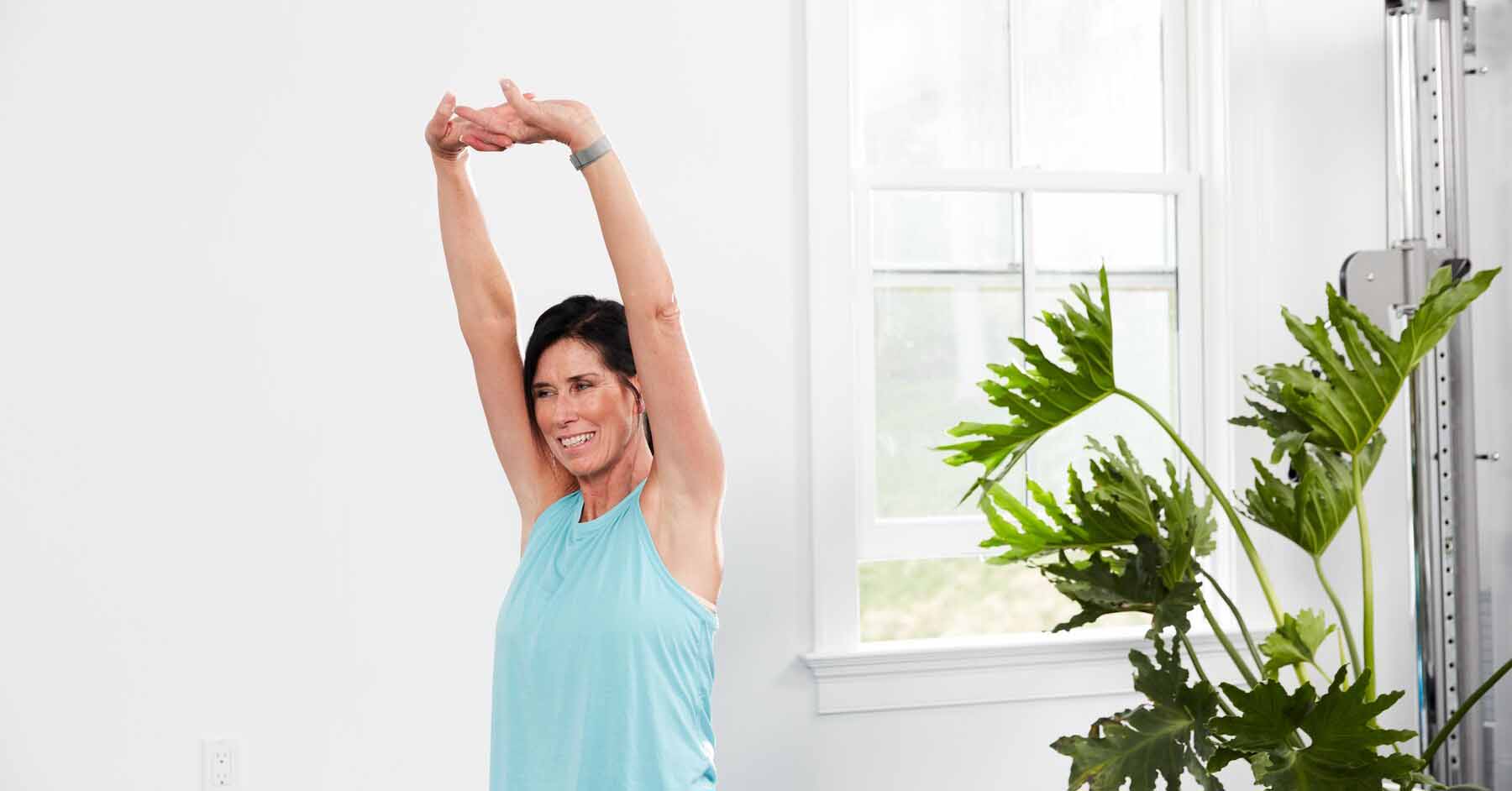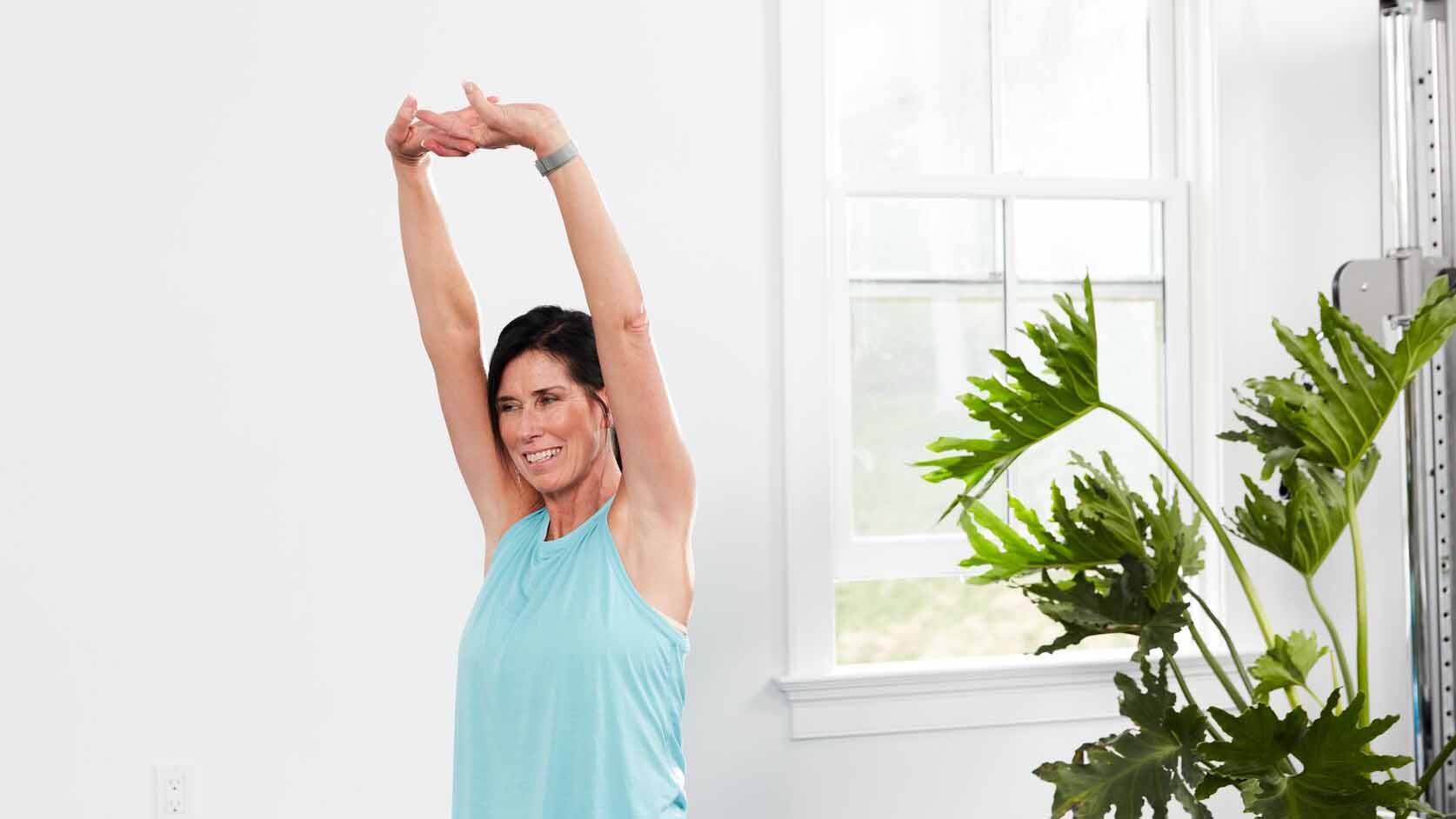Get your stretch on


Muscle tension, lower back pain, stress… sound familiar? Amid the COVID-19 pandemic, many people are working from home and may be finding new aches and pains or a lack of flexibility – especially if they are sitting at less-than-ideal desk setups.
To ease this muscle tension – and relieve stress in general – stretching is one of the best things you can do. And if you’re a novice stretcher, don’t worry – stretching is beginner-friendly.
“The main thing to note is that consistency will really pay off,” says Yoga Medicine therapeutic specialist Jenni Tarma. “However, you don’t need to do anything complicated or time-consuming to get the benefits of stretching; even a few minutes of easy movement at a time sprinkled out throughout the day will make a big difference in how you feel.”
Where to start
If stretching is a new habit you’d like to create, Tarma says having a strategy can be helpful. She suggests two techniques to make it part of your day:
-
Set a timer
“Setting an hourly reminder to get up and stretch (and actually following through) will make sure you don’t get to 5 p.m. and realize you’ve been sitting all day.”
-
Stack the habit
“Habit-stacking is another great tool: Tack your stretch break onto another habit that’s already firmly established. For example, you might decide to do a few stretches every time you get up to get a glass of water or make a cup of coffee,” says Tarma.
As for what kind of stretches to do when you’re starting out – you basically want to do gentle movements that feel good.
“Moving the spine in a variety of ways is simple and feels really good for most people: Either seated or standing, twist to the right and to the left; side bend in both directions; round and arch the spine a few times,” she says.
Tarma also recommends doing a forward fold – essentially, standing up straight and then bending forward to where you can touch the floor or near the floor.
“A gentle standing forward fold is an easy way to stretch the hamstrings and decompress the spine; you can bend your knees if the backs of the legs feel very tight or resistant. Additionally, forward folds are thought to have a down-regulating effect on the nervous system, which means they can be a good way to reset a busy mind any time you’re feeling frazzled or under the gun.”
Stretch to fight stress
If you work a stressful job or if you’re feeling anxious amid the pandemic, stretching can be a useful tool to calm your mind.
“Stretching can certainly ease stress in various ways, and many people find it to be a pleasant and relaxing activity in and of itself,” Tarma says.
“More symbolically, the act of setting aside some time for self-care is also significant: Simply making a conscious decision to prioritize your wellness in this manner can feel soothing and comforting on its own.”
One general guideline Tarma offers is to keep the intensity of your stretches to between low and medium.
“An overly strong sensation in the tissue can be perceived by the nervous system as a threat,” she explains, “and subsequently produce a sense of alarm and alertness in response, as well as a defensive contraction in the muscle. This reaction is, in effect, the exact opposite of what we want. … Holding the breath or tensing up elsewhere in the body are reliable signs that you can take the intensity down a notch or two.”
Stretches for the work-from-home crowd
“Generally, since sitting at a desk puts us in a globally flexed (or rounded) position, it feels really good to undo some of the resulting ‘computer hunch.’ This simply means moving in the opposite direction by arching the spine,” Tarma says.
She recommends simple movements like cat and cow stretches – a movement on all fours, in which you round the spine upwards, pulling the belly button in, and then arch the back and open up the chest.
Tarma says any movements that strengthen the muscles along the back of the body will be helpful, and can improve long-term posture and function.
“Try a yoga pose like cobra (lie on your belly with hands under the shoulders, then lift your chest up away from the floor), or locust pose (often also called a ‘superman’). Both target the muscles of the back and open the chest to counter the forward-rounded seated position.”
For tight or hunched shoulders – a common ailment among daily computer users – Tarma suggests a simple roll of the neck and shoulders to get things moving and set the shoulders in a more neutral position.
In a broader sense, Tarma says incorporating a greater variety and frequency of movement into your day will prevent the body from getting stiff.
“No position or posture is inherently bad in and of itself; we just need to make sure we don’t get stuck into any one position and lose the ability to access the others,” she says.
Going for walks around the block, setting a timer to stand up from your desk and stretch, playing with your pets or having mini dance parties are all great ways to loosen up your body.
Read on for sample stretches you can try:
Upper trapezius back and shoulder stretchends:
Here’s one Tarma recommend: Drop the right ear toward the right shoulder and gently drape the right arm over the top of the head, allowing the weight of the arm to pull the head a little further over. You can either let your left arm hang loosely by your side or take it behind your low back with the palm facing back behind you. Finally, feel free to add a slow, careful roll of the chin down toward your chest and back up. You’ll feel the stretch move to different parts of the shoulder, upper back and neck as you do so. Repeat on the other side.
The following seated stretches come from Hannah Daugherty, CPT-NASM and fitness expert, who serves on the advisory board for Fitter Living.
Hamstring chair stretch
Start seated and extend your legs straight in front of you with your feet flexed. Exhale, and slowly hinge forward, reaching for your toes if possible. Keep your back straight and take nice deep breaths, feeling the stretch in the back of your legs and lower back. Hold for 30-45 seconds.
Seated spine twist
From a seated position, cross one leg over the other, then twist toward the back of your chair in the direction of the leg that is on top. Let your head rotate with your upper body to look over your shoulder. Pull yourself into a deep stretch using the arm of the chair if needed. Hold for 30-45 seconds while breathing deeply.
Seated chest stretch
Sit up nice and straight in your chair, bringing your arms behind you and interlocking your fingers together. From here, bring your shoulders down and back, and straighten your arms to feel a stretch across your chest and the front of your shoulders. Take deep breaths and hold for 30-45 seconds.
